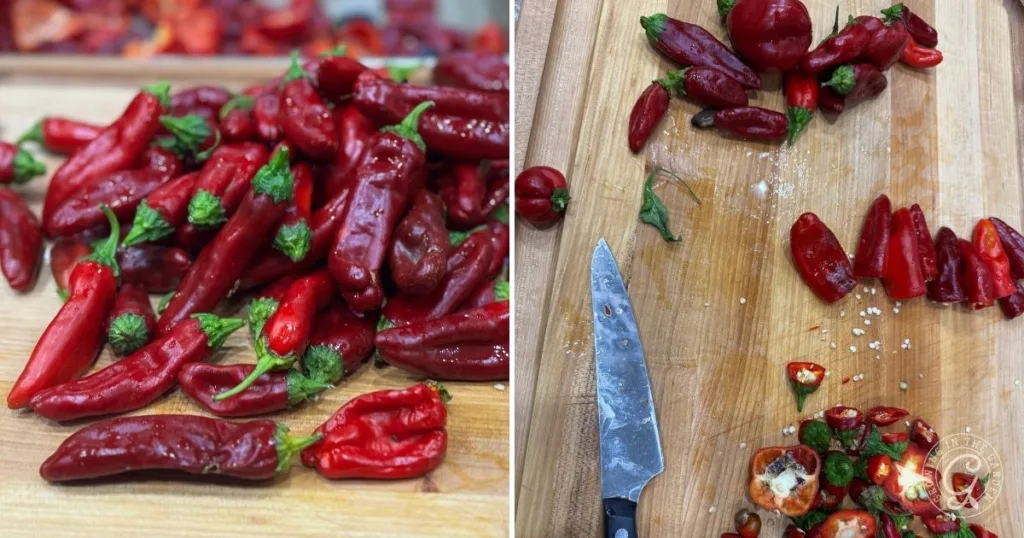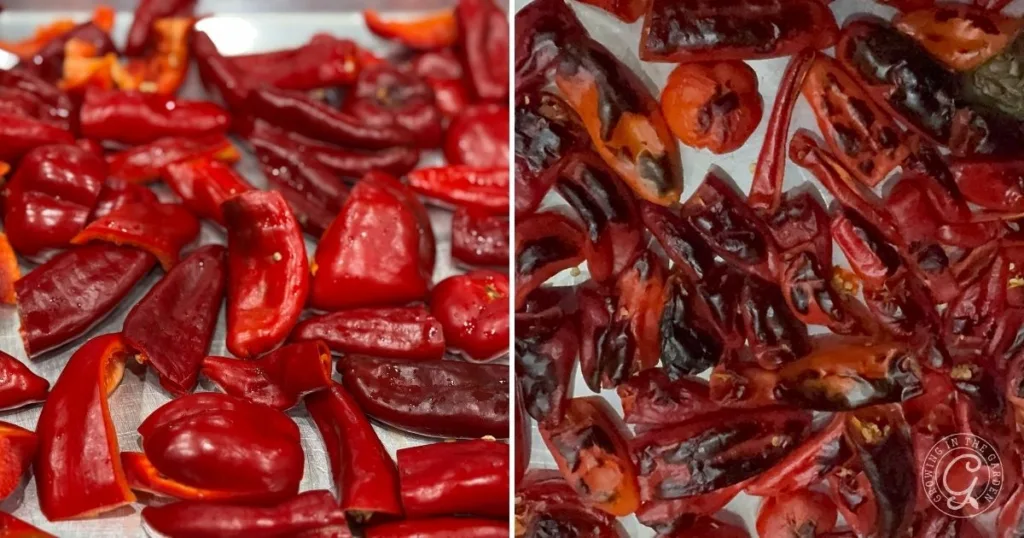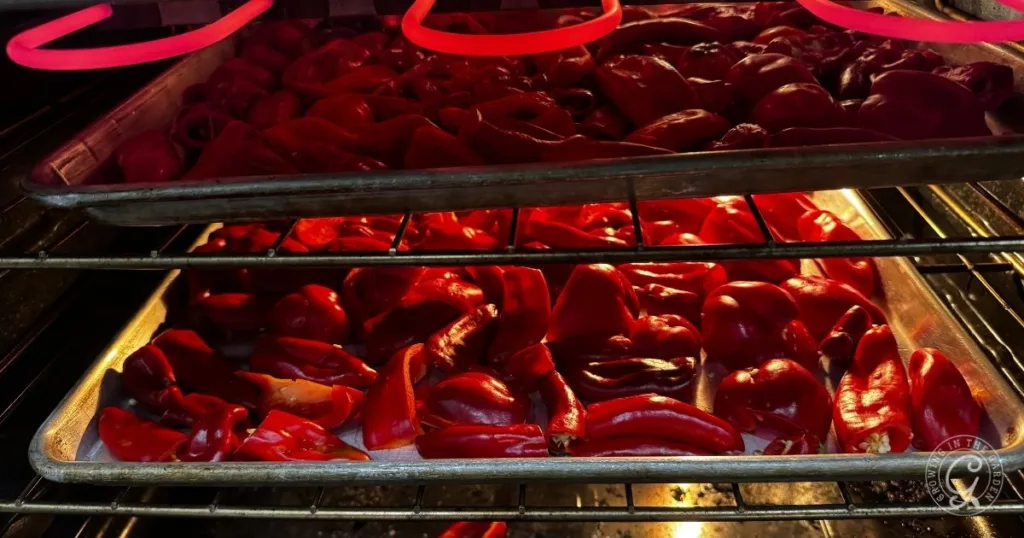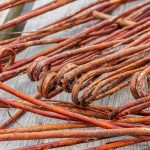And freeze peppers — a short introduction to this piece.
And freeze peppers: Quick Notes
Home » Resources & Recipes » Recipes
<!–
Recipes
–>
If your fall garden is overflowing with peppers, you’re not alone. Late fall in the low desert often brings an abundance, and I’m not sorry about it. Roasting and freezing them is my favorite way to preserve that sweet, smoky flavor for months to come. I love using medium-heat peppers like Carmen for this easy method. Once roasted, they’re perfect to keep on hand for adding to sauces, soups, pizzas, or just about any meal.
Why Fall Is the Best Time for Peppers


It’s late fall in the low desert, and that usually means one thing: an abundance of peppers. I added several pepper plants to my yard this spring, and now we’re reaping the rewards. When the garden gives you more peppers than you can use fresh, roasting and freezing them is the perfect way to capture that flavor for later.
My Favorite Way to Preserve Peppers


My favorite peppers to roast are medium-spice types like Carmen and Corno di Toro. Roasting brings out their natural sweetness and adds a smoky depth that works beautifully in so many dishes. A little effort now means you’ll have that freshly roasted flavor anytime you need it.
Before you begin, always wear gloves when handling hot or medium-spice peppers; oils from the peppers can linger on your skin and cause a burning sensation. Avoid touching your eyes or face while working with them.
Best Peppers for Roasting
Thick-walled, sweet, or mildly spicy peppers are perfect for roasting. Carmen, Corno di Toro, and Bell peppers develop rich, caramelized flavor and soft texture, while medium-heat types like Anaheim, Poblano, and Hungarian Wax roast beautifully too. Thin-walled hot peppers can be roasted, but they’ll cook much faster and may not peel as easily—and that’s okay, they still taste great.
Want help choosing the best peppers to grow? See my guide to Types of Peppers and How to Grow Them
How to Roast Peppers (Oven/Broiler Method)


This is the easiest method if you’re roasting several peppers at once.
Prep:
Preheat your oven to 425–450°F (220–230°C), or use the high broil setting. Line a baking sheet with parchment paper or foil. Wash the peppers, slice them in half lengthwise, and remove the stems, seeds, and membranes.
Roast:
Place peppers skin-side up on the baking sheet. Roast for 20–30 minutes, until the skins are charred and blistered. Keep a close eye on the peppers; you may need more or less time. If all sides aren’t charred, use metal tongs to turn the pepper until the entire skin is blackened and blistered.
Steam:
Transfer the hot peppers to a bowl and cover tightly with plastic wrap, a lid, or a clean towel. You can also place them in a paper bag and fold it closed. Let them steam for 10–15 minutes to loosen the skins.
Peel:
When cool enough to handle, peel off the skins with your fingers or a paring knife. Avoid rinsing the peppers under water so you don’t wash away flavor. If your peppers are thin-walled and the skin doesn’t peel easily, that’s fine—leave it on; the taste is still delicious. Chop or slice peppers as desired.
How to Store or Freeze Roasted Peppers


I like to chop up the peppers and then portion roasted peppers into two sizes of silicone molds before freezing. Once frozen, I pop them out and store them in a freezer bag. This makes it easy to grab just what I need—whether it’s a teaspoon or two tablespoons—for soups, dips, or sauces.
If you’d rather refrigerate them, store peeled, sliced, or whole roasted peppers in an airtight container covered with olive oil. They’ll keep in the fridge for up to two weeks. For longer storage, freezing is best.
Favorite Ways to Use Roasted Peppers


Roasted peppers are one of those ingredients that instantly elevate any dish. Here are a few of my go-to uses:
- Dips and Sauces: Blend them into hummus, romesco sauce, pesto, or creamy pasta sauces.
- Salads, Sandwiches, and Wraps: Add strips to salads, sandwiches, or antipasto platters for soft texture and smoky flavor.
- Egg Dishes: Fold into scrambled eggs, omelets, or frittatas.
- Pizzas and Soups: Use as a pizza topping or blend into a hearty roasted red pepper soup.
- Fajitas or Tacos: Toss a few roasted strips into your skillet for instant smoky heat.
You may also like:
How do you like to use roasted peppers? I’d love to hear your favorite combinations in the comments below.
And freeze peppers appears here to highlight key ideas for readers.













